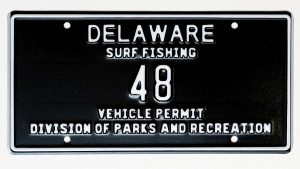DOVER – The Department of Natural Resources and Environmental Control (DNREC) has concluded that there was no increased risk to human health or safety from deluge water used to contain the Nov. 25, 2018 ethylene oxide (EO) release at Croda’s Atlas Point facility. DNREC’s conclusion was made from a soil and groundwater sampling report required of Croda by the Department as part of a settlement agreement with DNREC in the aftermath of the EO incident.
The full report, prepared by an environmental consultant on Croda’s behalf and reviewed by DNREC’s Site Investigation & Restoration Section, can be found on the DNREC website. The DNREC-Croda settlement agreement requiring the report from Croda assessed a penalty of $230,000 to Croda for air, hazardous waste and water quality violations stemming from the EO incident, and additional steps to be completed by Croda before the EO plant can resume operations.
Data in the soil and groundwater report was based on the amount of deluge water that exceeded a containment sump at Croda’s facility in New Castle. Terms of the settlement agreement required soil and groundwater sampling by Croda to determine if EO-contaminated deluge water had impacted the area west of Croda’s EO production unit. EO was not detected in any of the soil or groundwater samples from Croda, according to the report.
Another compound associated with Croda’s operations, 1,4-dioxane, considered a contaminant, was detected in two soil samples, as well as the groundwater sample from the company. For the site’s intended manufacturing use, the reported concentrations of 1,4-dioxane in the groundwater samples do not pose an unacceptable risk to health and safety. The reported concentrations of 1,4-dioxane, the locations of detections noted during sampling, and past detections of 1,4-dioxane by DNREC at the site led the Department to conclude that there is a very low probability that last year’s EO release was the source of the 1,4-dioxane concentrations sampled. Based on the levels and location, no further action is required to address this portion of the site.
A DNREC letter to Croda reiterated that the Nov. 25, 2018 EO release does not change remedial actions already required by DNREC in addressing site contamination at the Atlas Point facility and that are ongoing as directed by the Department.
Media contact: Michael Globetti, DNREC Public Affairs, 302-739-9902
Vol. 49, No. 90
-End-


















































































